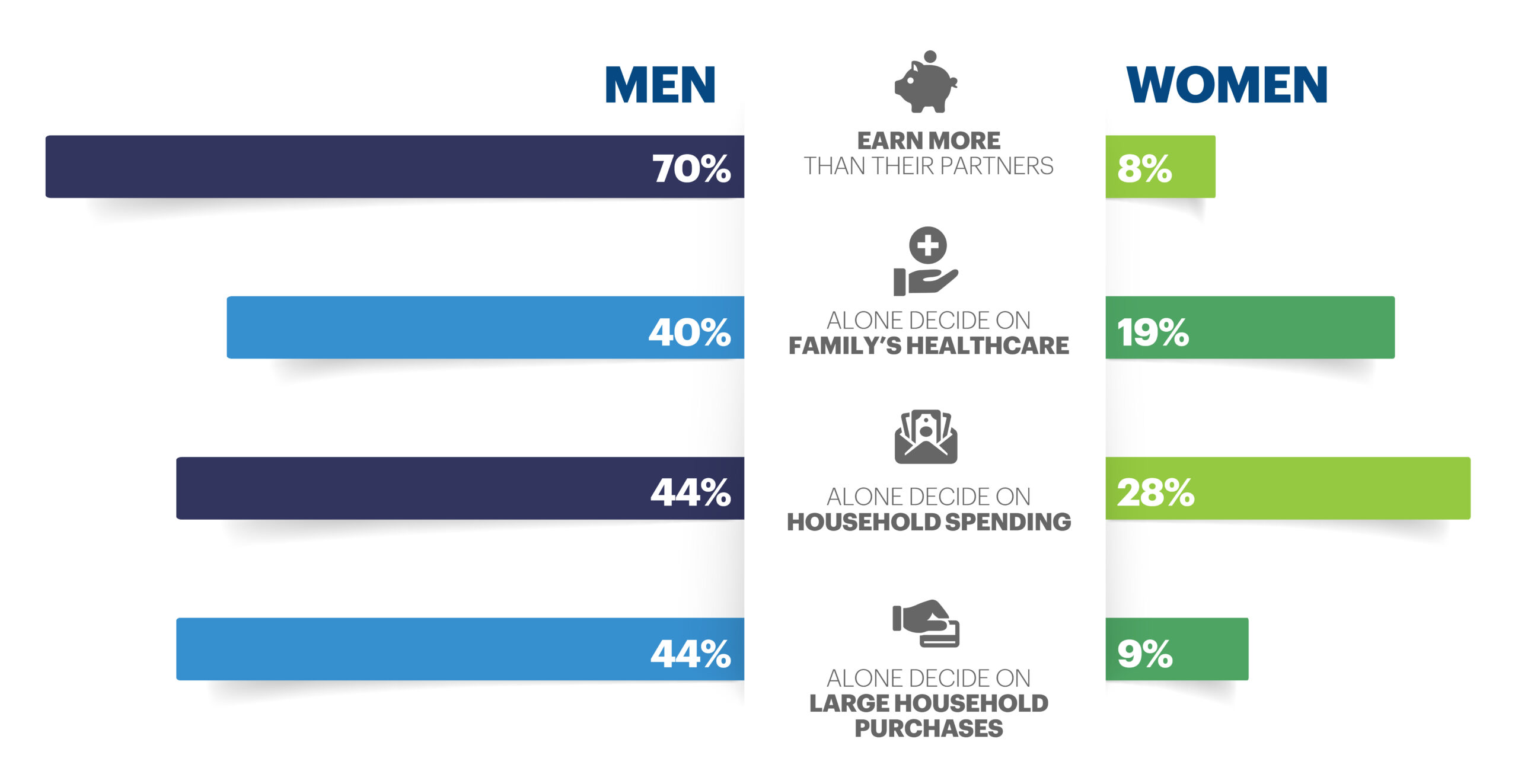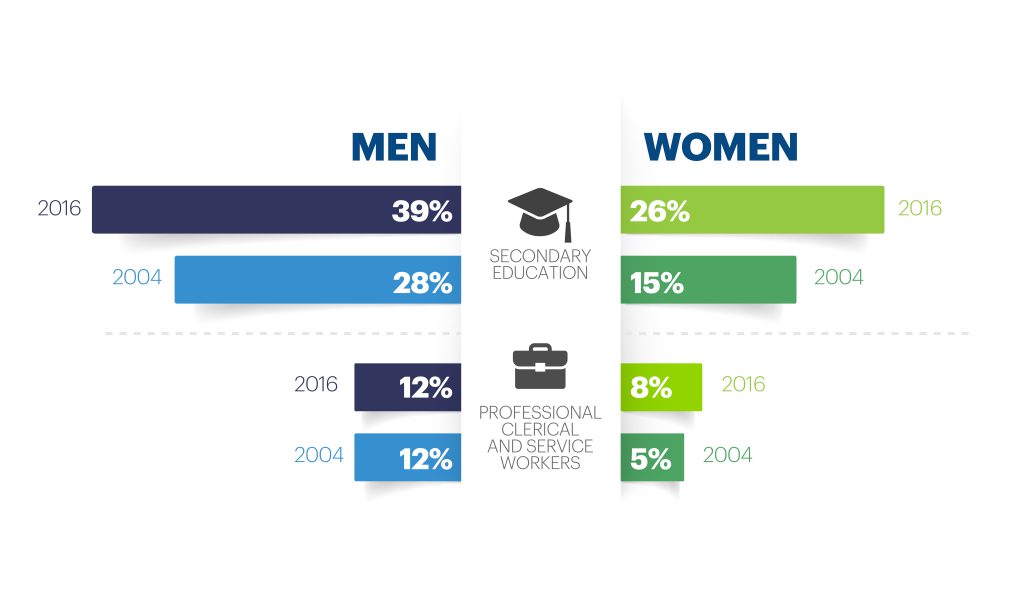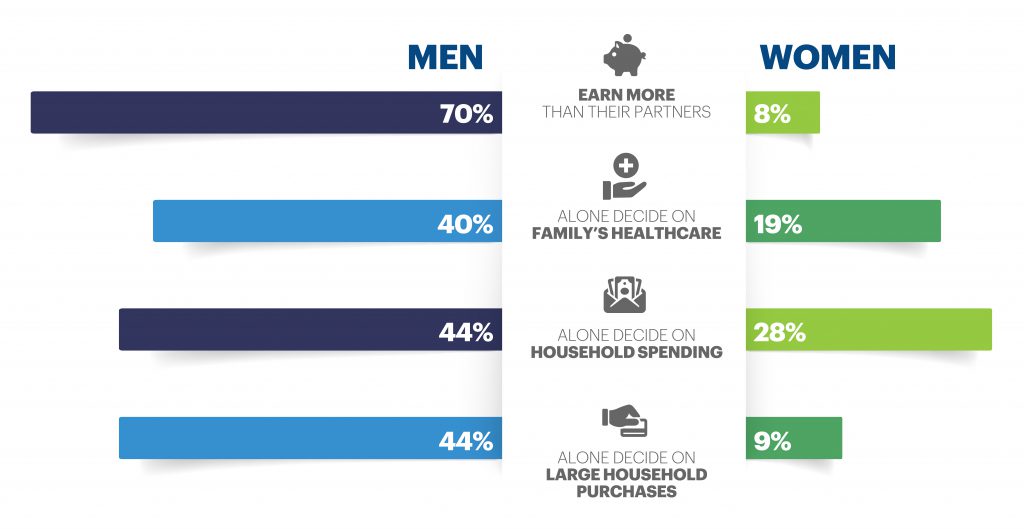Build Effective Social and Behavior Change Strategies


Gender equity is a holistic concept. Empowering women in one facet, often leads to their empowerment on others. In honor of International Women’s Day, Fraym looked at gender dynamics in Malawi based on various characteristics.
Trends in: Education and Employment
From 2004 to 2016, education levels and professional outcomes have increased notably in Malawi for both men and women. While women’s education and labor opportunities have improved over time, these indicators still lag behind those of their male counterparts. For instance, the number of people that have completed at least secondary education has improved by 10 percentage points for both genders. However, this represents only 26 percent of women compared to 39 percent of men. Women, however, have managed to moderately increase their representation in service and white and jobs, while the proportion of males in these industries has held steady.

Trends in: Earning and Decision Making
As of 2016 men have greater earning and decision making power than women. While 70 percent of men earn more than their partners, only 8 percent of women do so. Likewise, women are less likely to have the final say on major decisions. The biggest gender gap occurs in large household purchases, in which men are about 5 times as likely as women to make a decision alone.

Trends in: Power Dynamics Measured by Attitudes towards Domestic Violence
Gender power imbalance within the household has shrunk substantially over time. Most recently, about 16 percent of women between ages 18 and 49 think spousal abuse can be justified, compared to 28 percent in 2004. Similar to educational and professional opportunities, women empowerment has seen the biggest improvement in the Northern and Central Regions, where women’s tolerance to abuse has dropped from about 50 percent to less than 30 percent in several states, such as Mzimba, Kasungu, and Ntchisi. Despite the improvement over time, women in the Northern Region are still more tolerant to domestic abuse than those in the rest of the country. As of 2016, about 25 percent of women in the Northern Region believe spousal abuse can be justified, while about 15 percent of women in other regions think so.
Factors associated with gender balance
Given that gender imbalance in Malawi persists across different dimensions, it is worth understanding what factors are positively correlated with women’s empowerment. To do so, Fraym focused on health related decision making and attitudes towards domestic violence, and assessed the correlation between them and other demographic characteristics.
Results based on 2016 data show that women’s likelihood to independently decide on their own healthcare is positively correlated with residence in urban areas and in the Central or Southern Region, having children, and having a white or pink collar job. These findings highlight the multidimensional aspect of women’s empowerment.
Similarly, we found that women’s lower tolerance towards domestic violence is correlated with residence in urban areas and in the Central or Southern Region, good education, and greater access to communication technologies (i.e. mobile phone, radio.etc.). The high correlation between tolerance of abuse and geographic location suggests that local cultural norms may play a role.
To solve complex challenges, it’s important to be able to see the issue in its entirety. The breadth and depth of Fraym data provides a multi-faceted perspective, and helps organizations discover creative and actionable solutions.